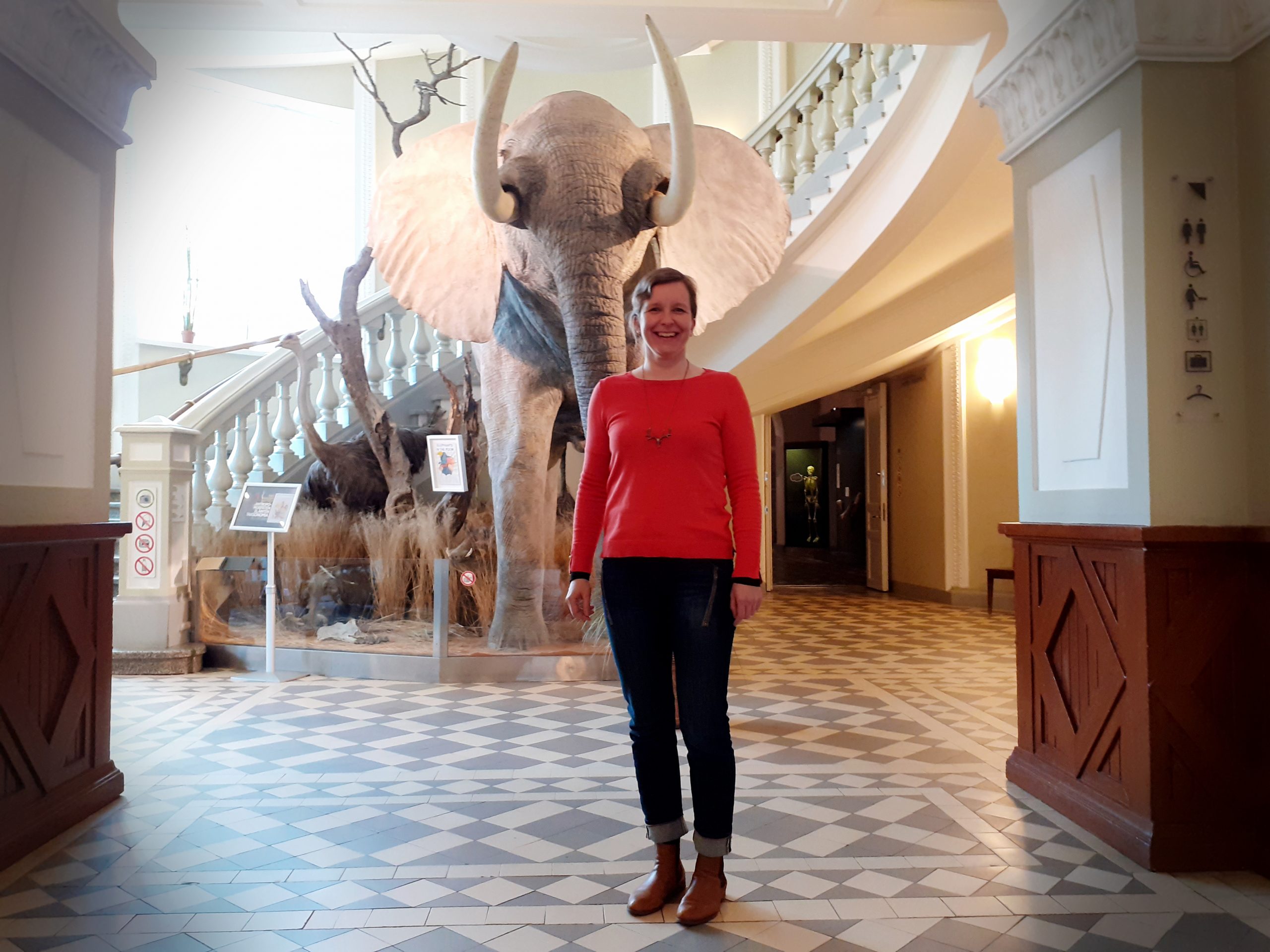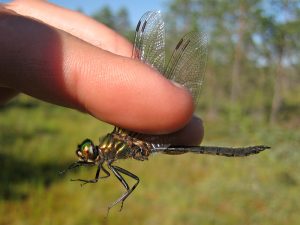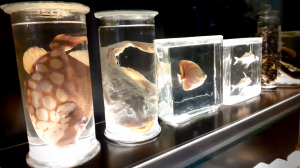Careful preparation of common guidelines, selection of an appropriate implementation strategy and commitment of the entire work community are key things when building an open science research infrastructure. Aino Juslén, Director of the Finnish Museum of Natural History (Luomus) tells in this interview how openness of science is implemented in different ways (open data, open source code, open education) in Finnish Biodiversity Information Facility (FinBIF), coordinated by Luomus.
(Tämä artikkeli on saatavilla myös suomeksi.)
Think Open article series introduces a variety of open science research infrastructures at the University of Helsinki. The Finnish Museum of Natural History (Luomus) and the Finnish Biodiversity Information Facility (FinBIF) coordinated by Luomus have been awarded the University of Helsinki’s Open Science Award 2019 and the national Open Science Promoter Award 2020. The FinBIF is also included in the Academy of Finland’s national research infrastructure roadmap.
Research infrastructure can be understood in many ways – what does research infrastructure mean for Luomus?
”It means two things. We have an infrastructure related to a physical collection of scientific specimens that includes approximately 13.5 million specimens. Then there is the FinBIF and its Laji.fi online service, through which digitised natural scientific collections data, species occerrences from long-term monitoring schemes and biodiversity data of several Finnish research and environmental organisations are openly accessible ”, explains Aino Juslén, Director of Luomus.

”Cite the DOI” – identifiers for datasets
The Laji.fi materials are used for research, teaching, preparation of policy measures and decision-making, and for business activities. Citizens also use the data in different ways.
Usage statistics are collected from Laji.fi, and service providers also strive to improve research use monitoring, for example, in which research articles the material has been used.
”One of the development targets for research infrastructures, also internationally, is to improve the monitoring of the use of data. In the autumn of 2019, key players in the field gathered for the Biodiversity Next conference, which focused largely on the development of biodiversity infrastructures. At the conference, I often heard: ’Cite the DOI.’ The DOI (digital object identifier) is familiar from publications, but now the aim is for data sets to have a DOI as well – and that has been our goal too.”
At the conference, I often heard: ’Cite the DOI.’ The DOI (digital object identifier) is familiar from publications, but now the aim is for data sets to have a DOI as well – and that has been our goal too.
The persistent identifier provides information not only about usage but also ensures that the data is cited correctly (see the blog article: Data is on its ways to a recognized research output). The international research infrastructure, the Global Biodiversity Information Facility, disseminates biodiversity data worldwide, and through it, the FinBIF datasets also receive a DOI. In addition, the FinBIF uses URIs (uniform resource identifiers), which resolves the data and meet the criteria for open data.
As a new opening in infrastructures, Juslén mentions the consortium of European natural science collections, DiSSCo (Distributed System of Scientific Collections), which has 21 countries and more than a hundred collections. It will develop a European digital infrastructure providing one-stop access to digital collections. Juslén was elected as vice-chair of DiSSCo General Assembly in 2020.
Luomus and FinBIF / Laji.fi
|
FAIR principles in practice
FinBIF strives to implement the FAIR principles in the openness of data. FAIR means enabling data to be findable, accessible, interoperable and reusable.
”We have been quite able to implement findability and accessibility: the search functions are advanced and the download functionality has been greatly improved. Among other things, interoperability requires – in addition to technical compatibility – a common understanding of species in order to share information. And it’s not quite simple: there are 45,000 species in Finland alone, and understanding of species is constantly changing”, Juslén says.
Reusability involves not only access rights, such as Creative Commons licenses, but also the identification of the origin of the data. According to Juslén, DOIs help here.
”We closely monitor the development work related to the implementation of the FAIR principles, and we reflect the FAIR level of our services to, among other things, the recommendations by the CSC – IT Center for Science.”
Openness also requires responsibility. The Laji.fi service has a section, which describes the handling of sensitive species information.
”In our field, the protection aspect must be taken carefully into account. In the past people thought that keeping information secret will contribute to protection. But now it is thought that sharing data and all information as openly as possible will contribute to protection.”
Open science is realized in many different ways
In addition to open research data, Luomus has many other features of open science: open access publishing, open education (open learning materials – see e.g. Pinkka learning environment), citizen science and open source.
In scientific publishing, Luomus researchers have taken steps in a more open direction: in 2017, 51 per cent of scientific publications were openly available, the following year the OA percentage had risen to 69 per cent.
”Open access may be taken for granted, but it is not always the case. Here, the library services must also be acknowledged: open access publishing has been made very easy – all you have to do is to contact the open access service address.”

Luomus and FinBIF have been active in promoting citizen science for a long time. According to Juslén, commitment, interaction and reciprocity are essential in citizen science. Various observations involve advanced nature enthusiasts, schoolchildren, organisations, companies and citizens; when they provide information about the environment, the user interfaces must be satisfactory and users must receive feedback on their activities, for example in the form of statistics.
”Citizen science cannot succeed without coordination. Without any resources, it is difficult to take advantage of citizen science.”
In FinBIF, the source code is also open (see Bitbucket ja Gihub). With the help of open source, and especially through an open and documented API, it is possible to build, for example, web services or mobile applications on top of the open data of the Laji.fi.
Open science as an established practice – three points
The need for open science practices has been recognized at the Finnish Museum of Natural History for a long time, although development work did not begin until the 2010s. Juslén lists three key points that should be taken into account when building open science infrastructure. She starts with the policies.

”We have outlined the use of data and other activities in policy documents. Among other things, we have a digital data policy (revised in 2019), in which it is jointly agreed how the digital material will be shared. It is important that we can return to policies time and time again, both in internal discussions and with our partners. It is also important to understand that policy-making is a task that is broadly participatory and worth spending enough time on.”
Another prerequisite for effective open science infrastructures is the choice of an appropriate implementation method.
”A very central choice in the early stages was to implement this with an agile development model. It has started with certain datasets and certain parts of the system. Development work has been done in sprints of a couple of weeks and there has been a constant dialogue with users. This way of working has also enabled FinBIF to commit to projects with external funding”, says Juslén and she also emphasizes the great importance of in-house development by Luomus’ own ICT team.
It is important that we can return to policies time and time again, both in internal discussions and with our partners.
The third key factor in building an open science infrastructure is leadership and staff involvement.
”Our leadership has been goal-oriented. We implement a strategy that leads to goals for each team and individual. I feel that common goals have been embraced at Luomus throughout the organisation. It’s good to give praise and feedback so everyone can see how their own daily work relates to a bigger issue, open science”, says Juslén.
Article series on Open Science infrastructures:
